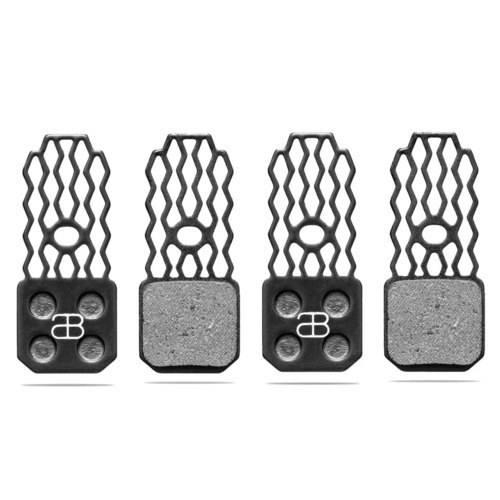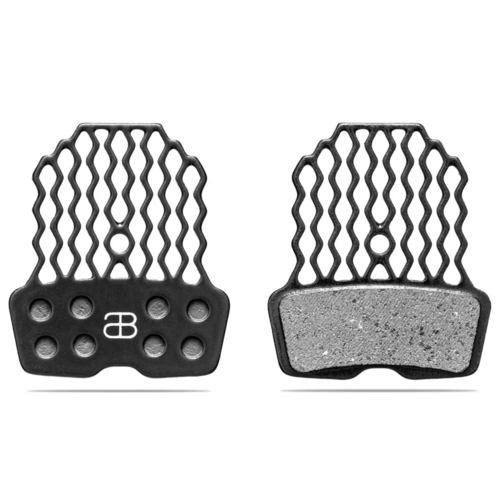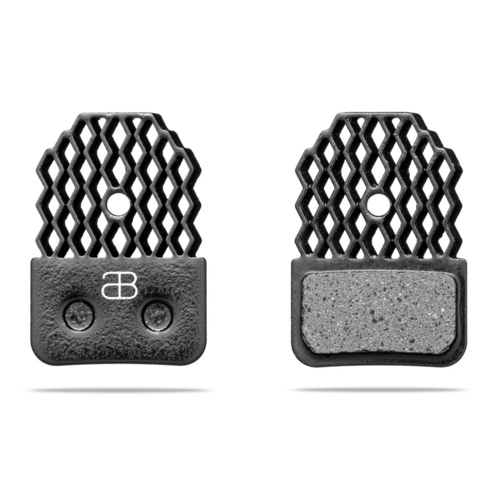THE KEY ELEMENTS OF GRAPHENPADS®
1. Specially modified graphene boosts braking performance, durability, and heat transfer like never before.
2. Graphene-coated backplates amplify heat dissipation by over 20%, ensuring cooler, more efficient braking.
3. Patented angled radiator fins deliver superior airflow, increasing surface area by 40% for unparalleled cooling.
4. We're leading the charge in sustainability by eliminating toxic copper, staying ahead of regulations for cleaner braking.
5. With an extraordinary lifespan of up to 8000km, these EU-produced pads outlast the competition while preserving rotor integrity.
WHAT YOU WILL FEEL
* Predictability and power, allowing you to regain full control of your braking
* Better modulation and faster stopping
* Improved confidence when descending
* No brake fade, more consistency and reliable braking feel corner after corner, even on the most demanding descends.
* They are very quiet, even during long descends.
* They reduce fatigue of your hands due to greatly reduced brake lever force needed to achieve powerful braking compared to competition.
Experience the difference. Ride with confidence.
















